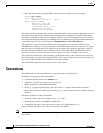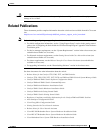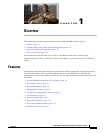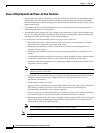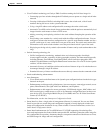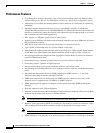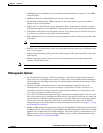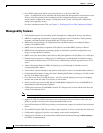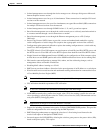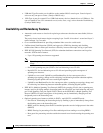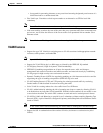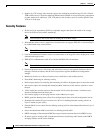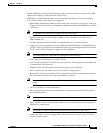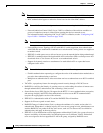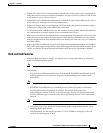
1-6
Catalyst 2960 and 2960-S Switch Software Configuration Guide
OL-8603-09
Chapter 1 Overview
Features
• Cisco IOS Configuration Engine (previously known to as the Cisco IOS CNS
agent)-—Configuration service automates the deployment and management of network devices and
services. You can automate initial configurations and configuration updates by generating
switch-specific configuration changes, sending them to the switch, executing the configuration
change, and logging the results.
For more information about CNS, see Chapter 4, “Configuring Cisco IOS Configuration Engine.”
Manageability Features
• CNS embedded agents for automating switch management, configuration storage, and delivery
• DHCP for automating configuration of switch information (such as IP address, default gateway,
hostname, and Domain Name System [DNS] and TFTP server names)
• DHCP relay for forwarding User Datagram Protocol (UDP) broadcasts, including IP address
requests, from DHCP clients
• DHCP server for automatic assignment of IP addresses and other DHCP options to IP hosts
• DHCP-based autoconfiguration and image update to download a specified configuration a new
image to a large number of switches
• DHCP server port-based address allocation for the preassignment of an IP address to a switch port
• Directed unicast requests to a DNS server for identifying a switch through its IP address and its
corresponding hostname and to a TFTP server for administering software upgrades from a TFTP
server
• Address Resolution Protocol (ARP) for identifying a switch through its IP address and its
corresponding MAC address
• Unicast MAC address filtering to drop packets with specific source or destination MAC addresses
• Configurable MAC address scaling that allows disabling MAC address learning on a VLAN to limit
the size of the MAC address table
• Cisco Discovery Protocol (CDP) Versions 1 and 2 for network topology discovery and mapping
between the switch and other Cisco devices on the network
• Link Layer Discovery Protocol (LLDP) and LLDP Media Endpoint Discovery (LLDP-MED) for
interoperability with third-party IP phones
• LLDP media extensions (LLDP-MED) location TLV that provides location information from the
switch to the endpoint device
Note To use LLDP-MED, the switch must be running the LAN Base image.
• Support for CDP and LLDP enhancements for exchanging location information with video end
points for dynamic location-based content distribution from servers
• Network Time Protocol (NTP) for providing a consistent time stamp to all switches from an external
source
• Cisco IOS File System (IFS) for providing a single interface to all file systems that the switch uses
• Configuration logging to log and to view changes to the switch configuration
• Unique device identifier to provide product identification information through a show inventory
user EXEC command display



